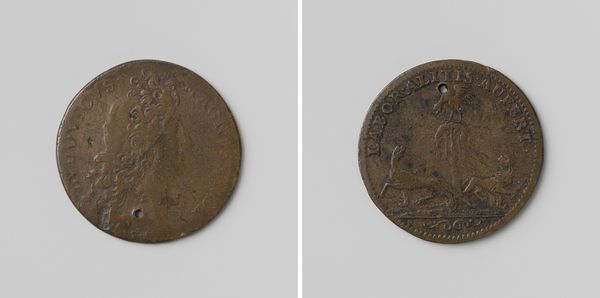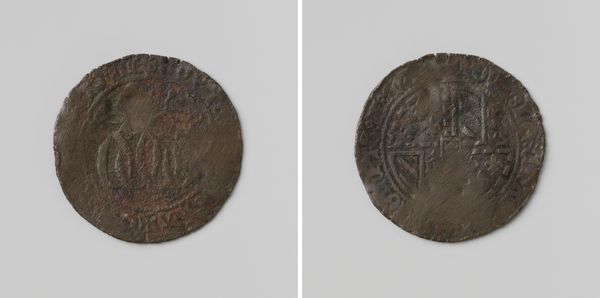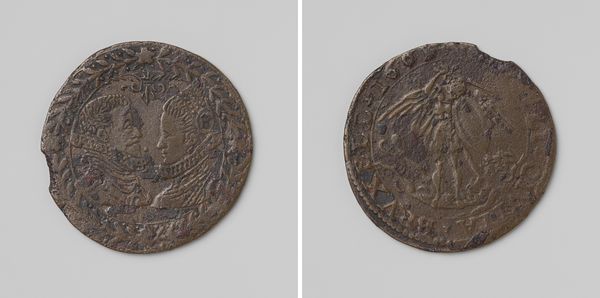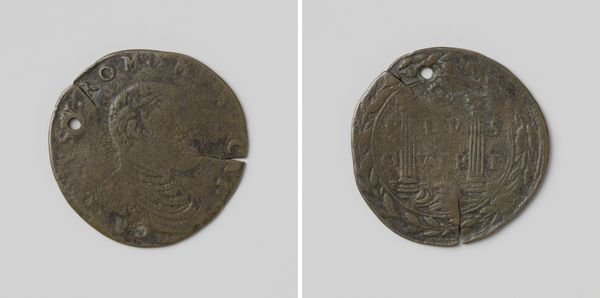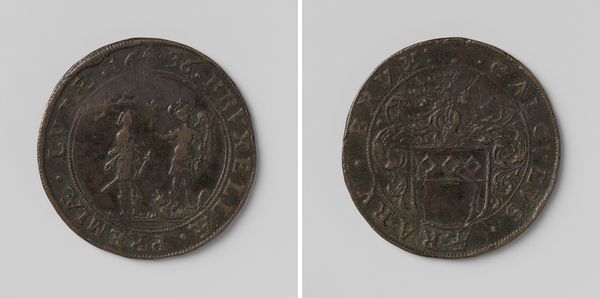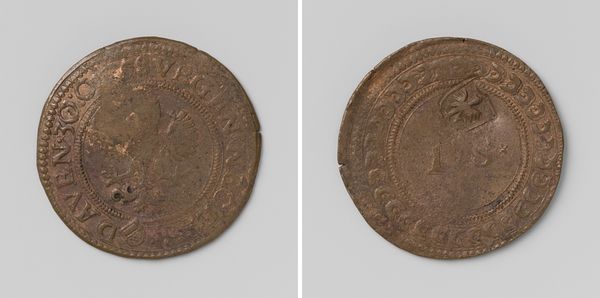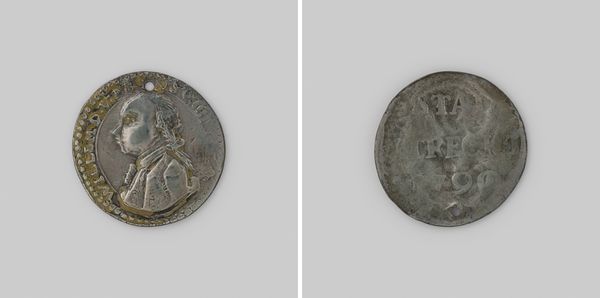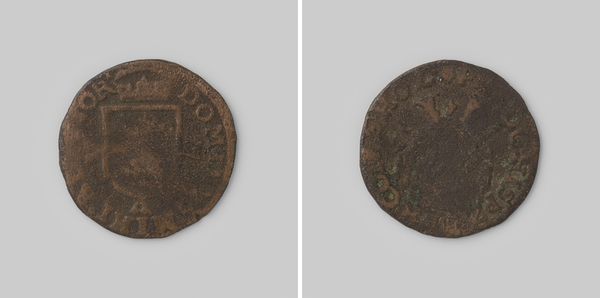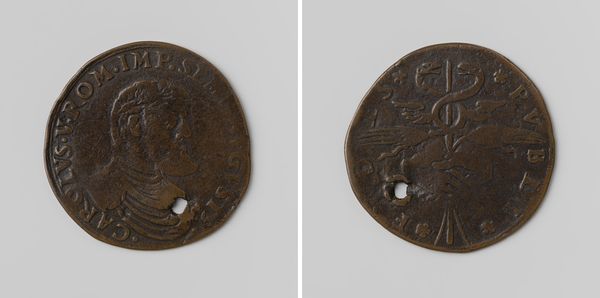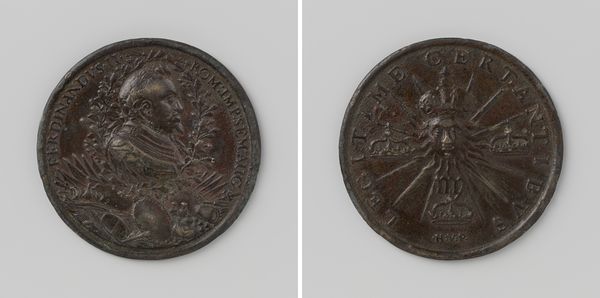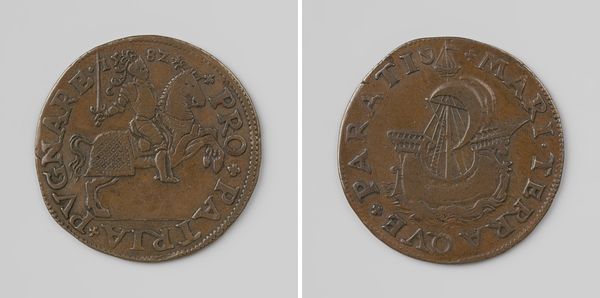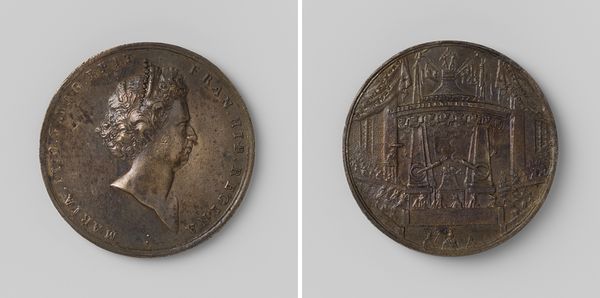
Vijfentwintigjarig regeringsjubileum van Koningin Wilhelmina 1923 1923
0:00
0:00
Dimensions: diameter 9.8 cm, weight 154.05 gr
Copyright: Rijks Museum: Open Domain
Curator: This bronze relief sculpture at the Rijksmuseum is titled "Vijfentwintigjarig regeringsjubileum van Koningin Wilhelmina 1923," created to commemorate Queen Wilhelmina of the Netherlands' 25th anniversary on the throne. It was made in 1923 by Chris van der Hoef. Editor: It’s immediately striking, this commemorative medal. It's worn, of course, but its small scale packs quite a bit of textural and symbolic detail. The tooling and the bronze lend it this heavy sense of importance. Curator: Indeed, it’s fascinating how these types of medals functioned in society. Consider the politics of imagery at play here – this isn't just about the queen, it’s about cementing her image and authority within the burgeoning context of nation-state ideology after the First World War. Editor: Right, and the choice of bronze isn’t arbitrary, either. Bronze is durable, industrial, and casts a long shadow on class struggles of the early 20th century. A durable but cheap material, its multiplication as keepsakes served to spread Wilhelmina's image across economic strata. I wonder what processes of production van der Hoef engaged, how much these circulated? Curator: Exactly. Van der Hoef was quite intentional. It incorporates recognizable Art Nouveau motifs within the portraiture—a conscious nod to cultural modernity during that time. We should also recall the political dimensions – how it provided both jobs, raw materials production, and a sense of national unity to a public perhaps skeptical after war. Editor: I agree, the visual language blends traditional portraiture with new-age design. Thinking about this circulated via the state, do you see it trying to bridge an ideological gap through materials as well as portraiture? Curator: Absolutely. By intertwining historical iconography with the emergent aesthetics, the jubilee's celebration also functioned as the projection of Wilhelmina’s reign itself - steadfast, enduring and modern - into a new socio-political era. Editor: Seeing it now through that lens, considering the materials, the reproduction—it changes my initial impression. This wasn't *just* commemorative; it was a really canny piece of political machinery using sculptural means. Curator: Precisely. Its very existence and dispersal became a political statement in itself. We cannot extract artwork such as these from their roles within constructing our shared histories and power relations.
Comments
No comments
Be the first to comment and join the conversation on the ultimate creative platform.
